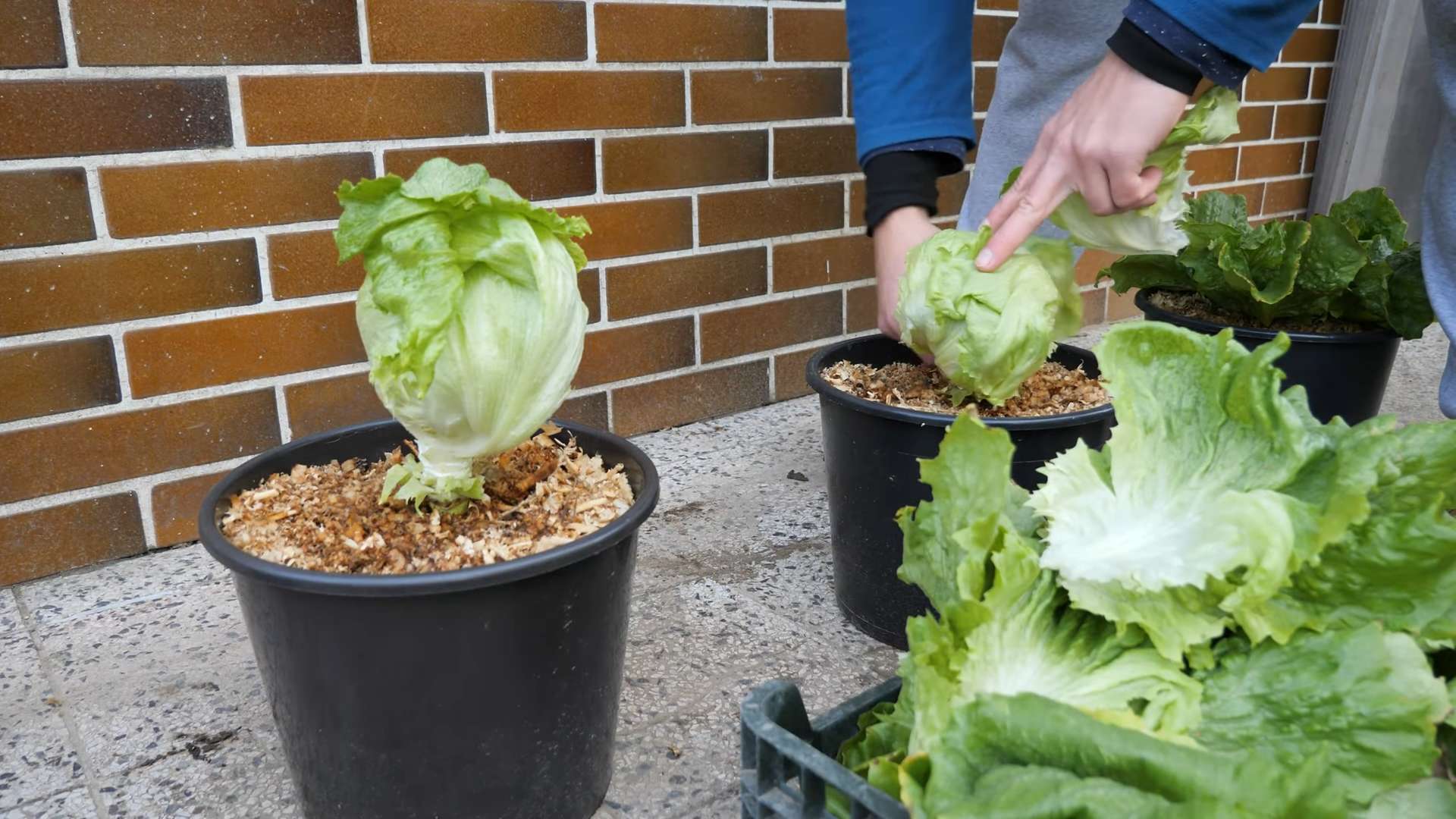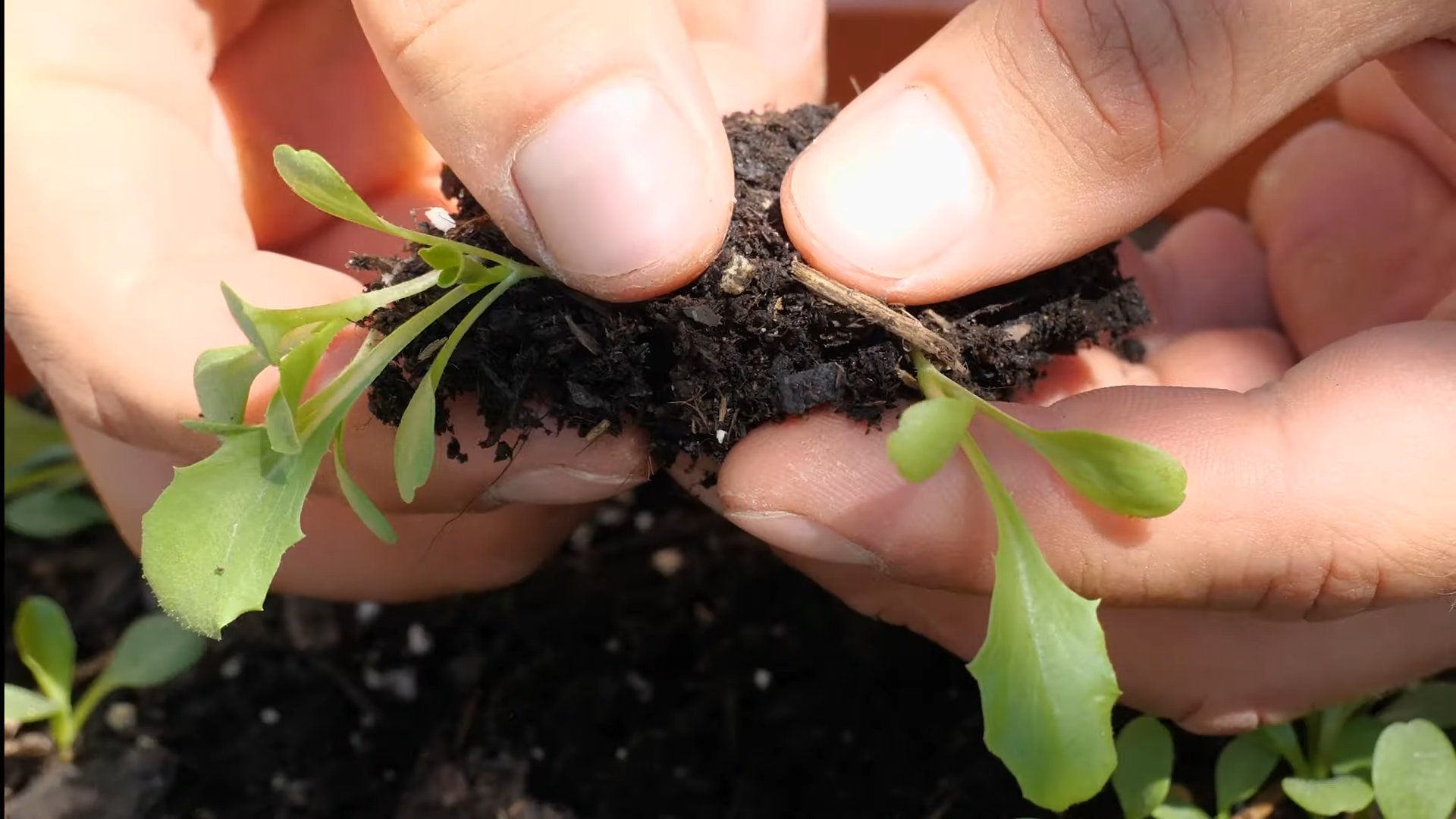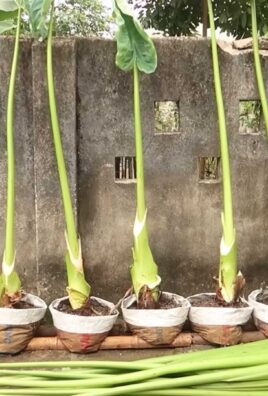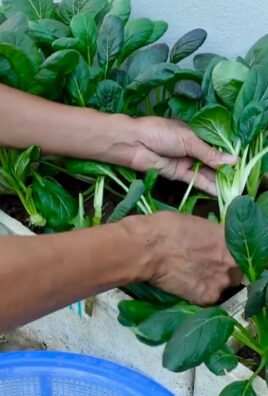Growing Iceberg Lettuce for Beginners can seem daunting, but trust me, with a few simple tricks, you’ll be enjoying crisp, homegrown lettuce in no time! Forget those sad, wilted heads from the grocery store – imagine the satisfaction of harvesting your own fresh, vibrant iceberg lettuce right from your backyard.
Lettuce has a rich history, dating back to ancient Egypt where it was initially cultivated for its seeds and oil. Over time, the leafy greens became a staple in diets worldwide. While iceberg lettuce might not be the most nutrient-dense variety, its refreshing crunch and mild flavor make it a beloved ingredient in salads and sandwiches.
Why should you bother learning these DIY tricks for growing iceberg lettuce? Well, for starters, you’ll save money! Plus, you’ll know exactly where your food comes from, avoiding harmful pesticides and ensuring the freshest possible taste. Many people struggle with growing iceberg lettuce because it can be a bit finicky about temperature and moisture. But don’t worry, I’m here to share some easy-to-follow tips and hacks that will help you succeed, even if you’re a complete beginner. Let’s dive in and discover the secrets to growing iceberg lettuce for beginners and transforming your garden into a lettuce lover’s paradise!

Growing Iceberg Lettuce: A Beginner’s Guide to Crispy Success
Okay, so you want to grow your own iceberg lettuce? Awesome! It’s totally doable, even if you’re a complete newbie. I’m going to walk you through everything you need to know, from seed to salad. Let’s get started!
Choosing the Right Time and Place
Timing is key with iceberg lettuce. It’s a cool-weather crop, meaning it thrives in temperatures between 60°F and 70°F (15°C and 21°C). Hot weather will cause it to bolt (go to seed), making the leaves bitter.
* Spring Planting: Start seeds indoors 6-8 weeks before the last expected frost. Transplant seedlings outdoors 2-3 weeks before the last frost.
* Fall Planting: Direct sow seeds outdoors 8-10 weeks before the first expected frost.
Location, Location, Location!
* Sunlight: Iceberg lettuce needs at least 6 hours of sunlight per day.
* Soil: Well-draining soil is crucial. Lettuce doesn’t like soggy feet! Amend your soil with compost or other organic matter to improve drainage and fertility. A slightly acidic soil pH of 6.0 to 6.8 is ideal.
* Space: Give each lettuce plant about 12 inches of space to grow. Overcrowding can lead to disease and smaller heads.
Starting from Seed (Indoors or Out)
You have two options: starting seeds indoors or direct sowing them outdoors. I usually prefer starting indoors because it gives me a head start and protects the delicate seedlings from pests and harsh weather.
Starting Seeds Indoors
1. Gather Your Supplies: You’ll need seed starting trays or small pots, seed starting mix (not regular potting soil!), iceberg lettuce seeds, a spray bottle, and a grow light (optional, but highly recommended).
2. Sow the Seeds: Moisten the seed starting mix. Then, sow 2-3 seeds per cell or pot, about ¼ inch deep. Gently cover the seeds with more mix.
3. Water Carefully: Use a spray bottle to mist the soil. You want to keep it consistently moist, but not soggy.
4. Provide Light: Place the trays or pots under a grow light or in a sunny window. If using a window, rotate the trays regularly to prevent the seedlings from leaning towards the light.
5. Maintain Temperature: Keep the soil temperature between 60°F and 70°F (15°C and 21°C). A heat mat can help if your house is cool.
6. Thin the Seedlings: Once the seedlings have their first true leaves (the second set of leaves that appear after the initial seed leaves), thin them to one seedling per cell or pot. Choose the strongest-looking seedling and snip off the others at the soil line. Don’t pull them out, as this can disturb the roots of the remaining seedling.
7. Harden Off the Seedlings: About a week before you plan to transplant the seedlings outdoors, you need to “harden them off.” This means gradually exposing them to outdoor conditions. Start by placing them outside in a sheltered spot for an hour or two each day, gradually increasing the amount of time they spend outdoors. This will help them adjust to the sun, wind, and temperature changes.
Direct Sowing Seeds Outdoors
1. Prepare the Soil: Make sure the soil is loose, well-draining, and free of weeds. Amend with compost if necessary.
2. Sow the Seeds: Sow the seeds about ¼ inch deep and 1 inch apart in rows that are 12 inches apart.
3. Water Gently: Water the soil gently to avoid washing away the seeds.
4. Keep the Soil Moist: Keep the soil consistently moist until the seeds germinate.
5. Thin the Seedlings: Once the seedlings have their first true leaves, thin them to 12 inches apart.
Transplanting Seedlings (If You Started Indoors)
1. Prepare the Garden Bed: Make sure the soil is loose, well-draining, and free of weeds. Amend with compost if necessary.
2. Dig Holes: Dig holes that are slightly larger than the root balls of the seedlings, spacing them 12 inches apart.
3. Carefully Remove the Seedlings: Gently remove the seedlings from their trays or pots, being careful not to damage the roots.
4. Plant the Seedlings: Place the seedlings in the holes and gently backfill with soil. Make sure the top of the root ball is level with the soil surface.
5. Water Thoroughly: Water the seedlings thoroughly after planting.
6. Mulch: Add a layer of mulch around the plants to help retain moisture, suppress weeds, and regulate soil temperature. Straw, shredded leaves, or wood chips work well.
Caring for Your Iceberg Lettuce
Once your lettuce is planted, it’s time to give it some TLC!
* Watering: Water regularly, especially during dry spells. Lettuce needs consistent moisture to thrive. Aim for about 1 inch of water per week. Water deeply and less frequently, rather than shallowly and often. Avoid getting the leaves wet, as this can promote disease.
* Fertilizing: Lettuce is a light feeder, but it will benefit from a little fertilizer. You can use a balanced organic fertilizer or side-dress with compost. Avoid over-fertilizing, as this can cause the leaves to become bitter.
* Weeding: Keep the garden bed free of weeds. Weeds compete with lettuce for water and nutrients. Hand-pull weeds carefully to avoid disturbing the lettuce roots.
* Pest Control: Keep an eye out for pests like aphids, slugs, and snails. You can use organic pest control methods, such as insecticidal soap or diatomaceous earth, to control these pests. I’ve found that beer traps work wonders for slugs and snails! Just bury a shallow dish filled with beer in the garden, and they’ll be attracted to it and drown.
* Bolting Prevention: As I mentioned earlier, hot weather can cause lettuce to bolt. To prevent bolting, provide shade during the hottest part of the day. You can use shade cloth or plant lettuce near taller plants that will provide some shade. Also, make sure the soil is consistently moist.
Harvesting Your Iceberg Lettuce
This is the best part! You’ll know your iceberg lettuce is ready to harvest when the head is firm and feels solid when you gently squeeze it. This usually takes about 70-85 days from seed.
1. Cut the Head: Use a sharp knife to cut the head of lettuce at the base of the plant.
2. Remove Outer Leaves: Remove any damaged or discolored outer leaves.
3. Wash and Store: Wash the lettuce head thoroughly and store it in a plastic bag in the refrigerator. It should keep for about a week.
Troubleshooting
Even with the best care, you might encounter some problems. Here are a few common issues and how to deal with them:
* Bolting: As mentioned earlier, hot weather is the main cause of bolting. Provide shade and keep the soil moist.
* Tipburn: This is a condition where the edges of the leaves turn brown. It’s usually caused by calcium deficiency or inconsistent watering. Make sure the soil is well-draining and water regularly. You can also add calcium to the soil by amending with bone meal or crushed eggshells.
* Slugs and Snails: These pests can wreak havoc on lettuce leaves. Use beer traps, diatomaceous earth, or hand-pick them off the plants.
* Aphids: These tiny insects suck the sap from lettuce leaves. Spray them with insecticidal soap or blast them off with a strong stream of water.
Enjoying Your Homegrown Lettuce
Now that you’ve harvested your own iceberg lettuce, it’s time to enjoy it! Use it in salads, sandwiches, or wraps. The possibilities are endless! There’s nothing quite like the taste of fresh, homegrown lettuce. I hope this guide has helped you feel confident about growing your own iceberg lettuce. Happy gardening!

Conclusion
So, there you have it! Growing your own iceberg lettuce at home, even as a beginner, is not only achievable but incredibly rewarding. Forget those limp, overpriced heads at the grocery store. Imagine crisp, vibrant, and utterly delicious iceberg lettuce, fresh from your garden, ready to elevate your salads, sandwiches, and wraps. This DIY approach puts you in control, allowing you to nurture your lettuce from seed to table, ensuring the highest quality and flavor.
Why is this a must-try? Because it’s simpler than you think! With just a little planning and effort, you can enjoy a continuous supply of fresh, organic iceberg lettuce. Plus, it’s a fantastic way to connect with nature, learn about the growing process, and reduce your reliance on store-bought produce. Think of the satisfaction of serving a salad made entirely with ingredients you’ve grown yourself!
But don’t stop there! Experiment with different varieties of iceberg lettuce. Some are more compact and heat-tolerant than others. Try staggering your planting schedule to ensure a continuous harvest throughout the growing season. Consider companion planting with herbs like dill or chives to deter pests and enhance the flavor of your lettuce. You can even try growing your iceberg lettuce in containers if you have limited garden space. The possibilities are endless!
Growing iceberg lettuce is a journey of discovery, and we encourage you to embark on it. Don’t be afraid to get your hands dirty, learn from your mistakes, and adapt your approach as needed. The reward of fresh, homegrown lettuce is well worth the effort.
We’re confident that with these tips and tricks, you’ll be enjoying your own homegrown iceberg lettuce in no time. Now, it’s your turn! Give this DIY method a try and share your experiences with us. We’d love to hear about your successes, challenges, and any variations you’ve discovered. Post your photos and stories in the comments below – let’s build a community of iceberg lettuce enthusiasts! Happy gardening!
Frequently Asked Questions (FAQ)
What is the best time of year to plant iceberg lettuce?
The best time to plant iceberg lettuce depends on your climate. Iceberg lettuce is a cool-season crop, meaning it thrives in temperatures between 60°F and 70°F (15°C and 21°C). In most regions, this means planting in early spring or late summer/early fall. For a spring crop, start seeds indoors 6-8 weeks before the last expected frost. For a fall crop, sow seeds directly into the garden in late summer, about 8-10 weeks before the first expected frost. If you live in a warmer climate, you can grow iceberg lettuce throughout the winter, provided you protect it from extreme cold snaps.
How much sunlight does iceberg lettuce need?
Iceberg lettuce requires at least 6 hours of direct sunlight per day. While it can tolerate some shade, especially during the hottest part of the day, insufficient sunlight will result in leggy, weak plants that are more susceptible to pests and diseases. Choose a sunny location in your garden or, if growing in containers, place them in a spot that receives ample sunlight.
What kind of soil is best for growing iceberg lettuce?
Iceberg lettuce prefers well-drained, fertile soil that is rich in organic matter. The ideal soil pH is between 6.0 and 7.0. Before planting, amend your soil with compost or well-rotted manure to improve its drainage, fertility, and water-holding capacity. Avoid heavy clay soils, as they can become waterlogged and lead to root rot. If you have clay soil, consider growing your iceberg lettuce in raised beds or containers.
How often should I water iceberg lettuce?
Iceberg lettuce needs consistent moisture to thrive. Water deeply and regularly, especially during hot, dry weather. Aim to keep the soil consistently moist but not waterlogged. Overwatering can lead to root rot, while underwatering can cause the lettuce to wilt and become bitter. A good rule of thumb is to water when the top inch of soil feels dry to the touch. Consider using a soaker hose or drip irrigation to deliver water directly to the roots, minimizing water loss and reducing the risk of fungal diseases.
How do I prevent iceberg lettuce from bolting?
Bolting, or premature flowering, is a common problem with iceberg lettuce, especially in hot weather. Once lettuce bolts, the leaves become bitter and unpalatable. To prevent bolting, choose heat-tolerant varieties, provide shade during the hottest part of the day, and water regularly to keep the soil cool and moist. You can also mulch around your plants to help retain moisture and regulate soil temperature. Harvest your lettuce as soon as it reaches maturity to prevent it from bolting.
What are some common pests and diseases that affect iceberg lettuce?
Iceberg lettuce can be susceptible to various pests and diseases, including aphids, slugs, snails, cutworms, and fungal diseases like downy mildew and powdery mildew. To prevent pest and disease problems, practice good garden hygiene, such as removing weeds and debris from around your plants. Inspect your lettuce regularly for signs of pests or diseases and take action promptly. You can use organic pest control methods, such as insecticidal soap or neem oil, to control aphids and other pests. To prevent fungal diseases, ensure good air circulation around your plants and avoid overhead watering.
How do I harvest iceberg lettuce?
Harvest iceberg lettuce when the head is firm and well-formed, typically about 70-80 days after planting. To harvest, use a sharp knife to cut the head at the base of the plant. You can also harvest individual leaves as needed, but this will slow down the growth of the head. After harvesting, store your iceberg lettuce in the refrigerator in a plastic bag or container. It will keep for about a week.
Can I grow iceberg lettuce in containers?
Yes, you can successfully grow iceberg lettuce in containers. Choose a container that is at least 12 inches deep and wide to provide enough room for the roots to grow. Use a well-draining potting mix and water regularly. Place the container in a sunny location that receives at least 6 hours of direct sunlight per day. Container-grown lettuce may dry out more quickly than lettuce grown in the ground, so check the soil moisture regularly and water as needed.
What are some good companion plants for iceberg lettuce?
Companion planting can help deter pests, attract beneficial insects, and improve the overall health of your iceberg lettuce. Some good companion plants for iceberg lettuce include:
* **Marigolds:** Repel nematodes and other pests.
* **Garlic:** Deters aphids and other pests.
* **Onions:** Deters aphids and other pests.
* **Carrots:** Improve soil drainage and deter lettuce root aphids.
* **Radishes:** Act as a trap crop for flea beetles.
* **Dill:** Attracts beneficial insects that prey on aphids.
* **Chives:** Deters aphids and other pests.
How can I improve the flavor of my homegrown iceberg lettuce?
The flavor of your homegrown iceberg lettuce can be influenced by several factors, including soil quality, watering practices, and sunlight exposure. To improve the flavor, ensure that your soil is rich in organic matter and that you are watering regularly to keep the soil consistently moist. Avoid overwatering, as this can dilute the flavor. Provide ample sunlight, as this will help the lettuce develop its full flavor potential. You can also try adding a small amount of fertilizer to the soil to provide the lettuce with the nutrients it needs to thrive.




Leave a Comment